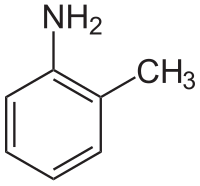
Photo from wikipedia
Studies on the freshwater crab Sinopotamon henanense have shown that acute and sub-chronic Cd2+ exposure induced differential alterations in the respiratory physiology and gill morphology. To elucidate Cd2+ toxicity under… Click to show full abstract
Studies on the freshwater crab Sinopotamon henanense have shown that acute and sub-chronic Cd2+ exposure induced differential alterations in the respiratory physiology and gill morphology. To elucidate Cd2+ toxicity under these two exposure conditions, crabs were acutely exposed to 7.14, 14.28, and 28.55 mg/L Cd2+ for 96 h and sub-chronically exposed to 0.71, 1.43, and 2.86 mg/L Cd2+ for 3 weeks. The Cd2+ accumulation, total metallothionein (MT), superoxide dismutase, and malondialdehyde (MDA) contents in the gill tissues were detected. Moreover, the glucose-6-phosphate dehydrogenase (G6PDH) activity, NADPH content, reduced glutathione (GSH), oxidized glutathione (GSSG), and GSH/GSSG ratio in the hepatopancreas were determined. The morphology of the X-organ–sinus gland complex was also observed. The results showed that sub-chronical Cd2+ exposure induced lower MT content and higher MDA level in the gills than in the acute exposure. In the hepatopancreas, acute Cd2+ exposure decreased the pentose phosphate pathway activity and NADPH content; however, an increased G6PDH activity and NADPH content were detected in sub-chronic Cd2+ exposure (2.86 mg/L). Morphological changes occurred in the sinus gland in crabs exposed to 2.86 mg/L Cd2+ for 3 weeks. The tightly packed structure composed by the axons, enlarged terminals, and glial cells, became loose and porous. Ultra-structurally, a large number of vacuoles and few neurosecretory granules were observed in the axon terminal. These effects added to our understanding of the toxic effects of Cd2+ and provide biochemical and histopathological evidence for S. henanense as a biomarker of acute or long-term waterborne Cd2+ pollution.
Journal Title: Environmental Science and Pollution Research
Year Published: 2021
Link to full text (if available)
Share on Social Media: Sign Up to like & get
recommendations!